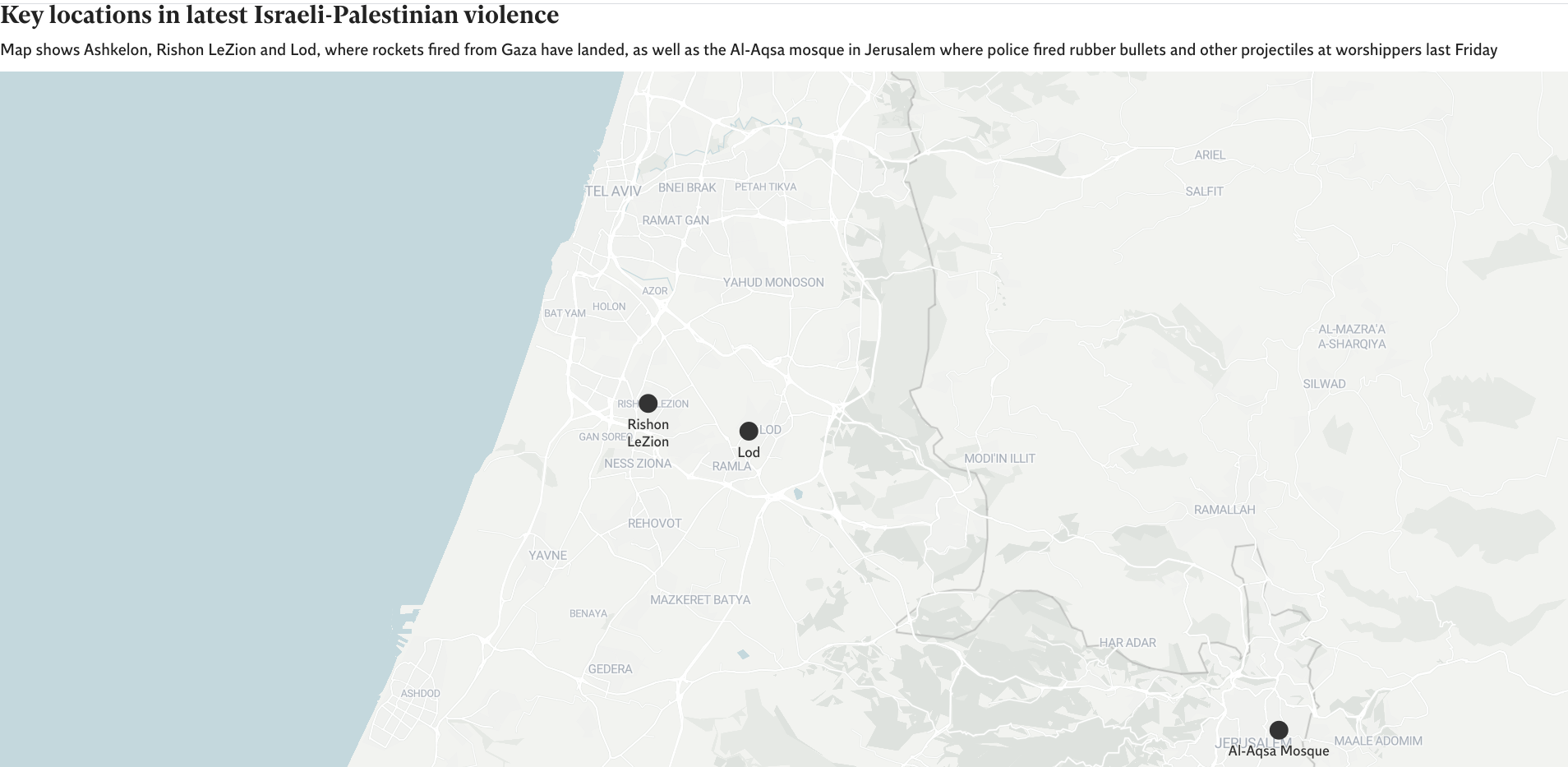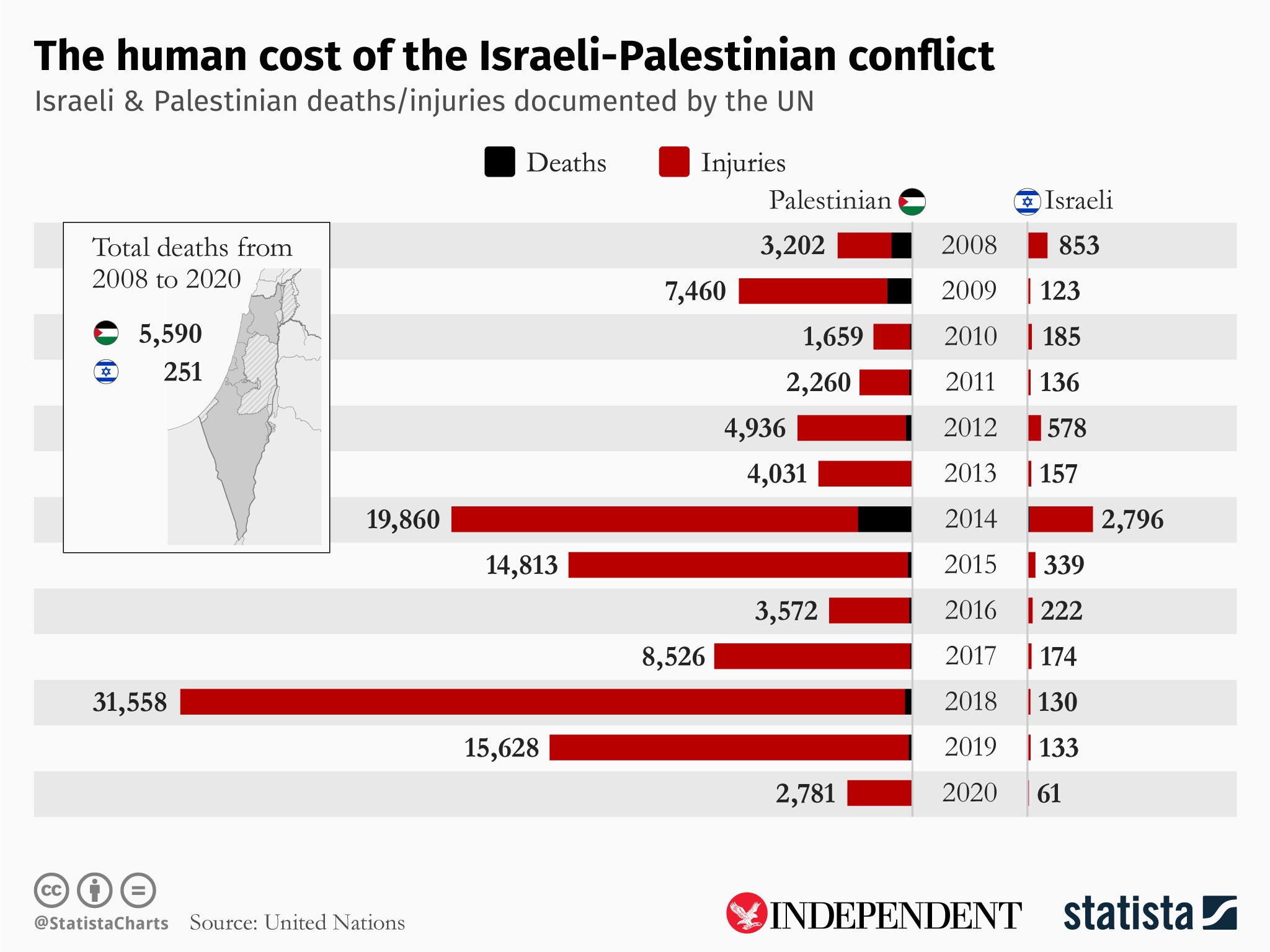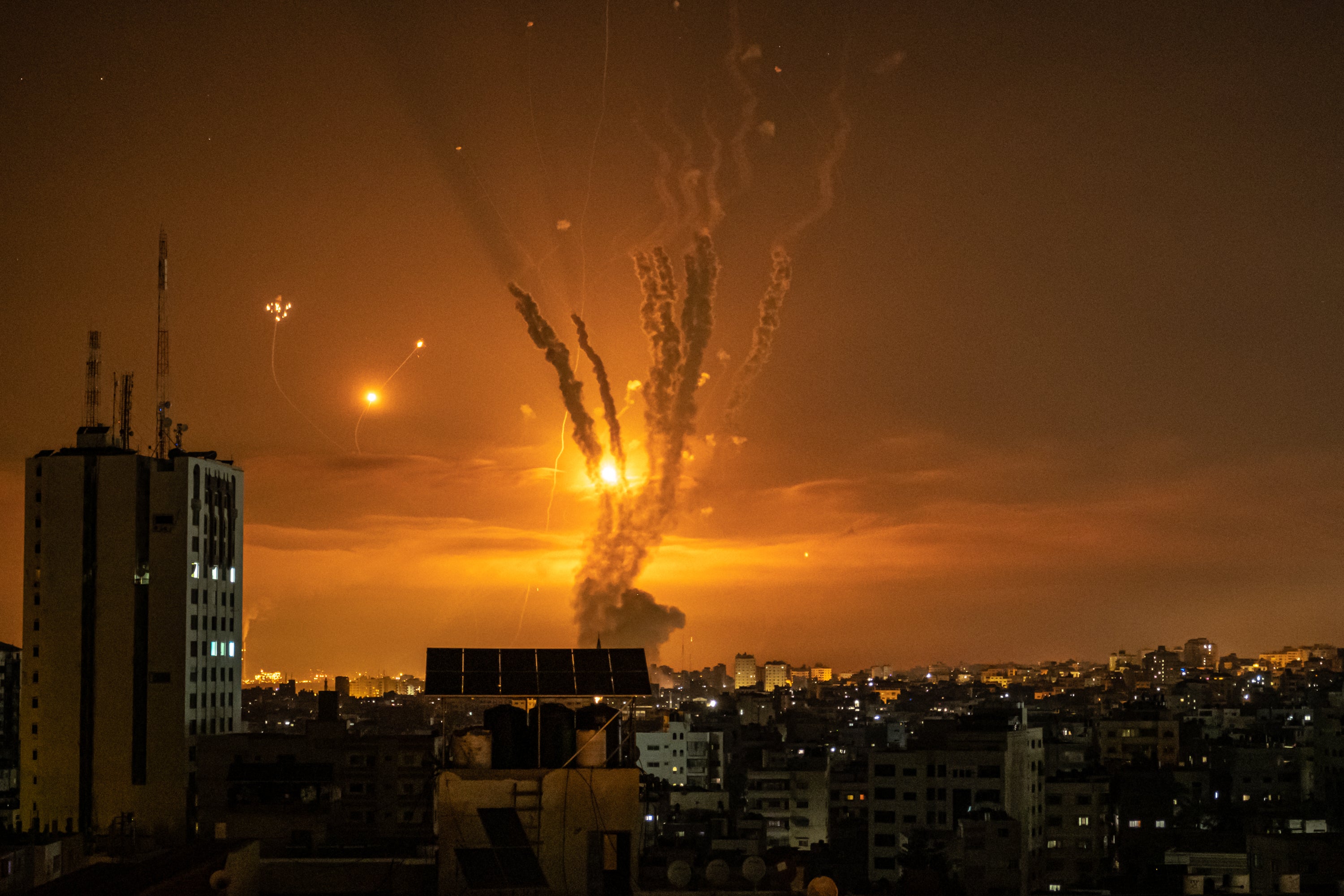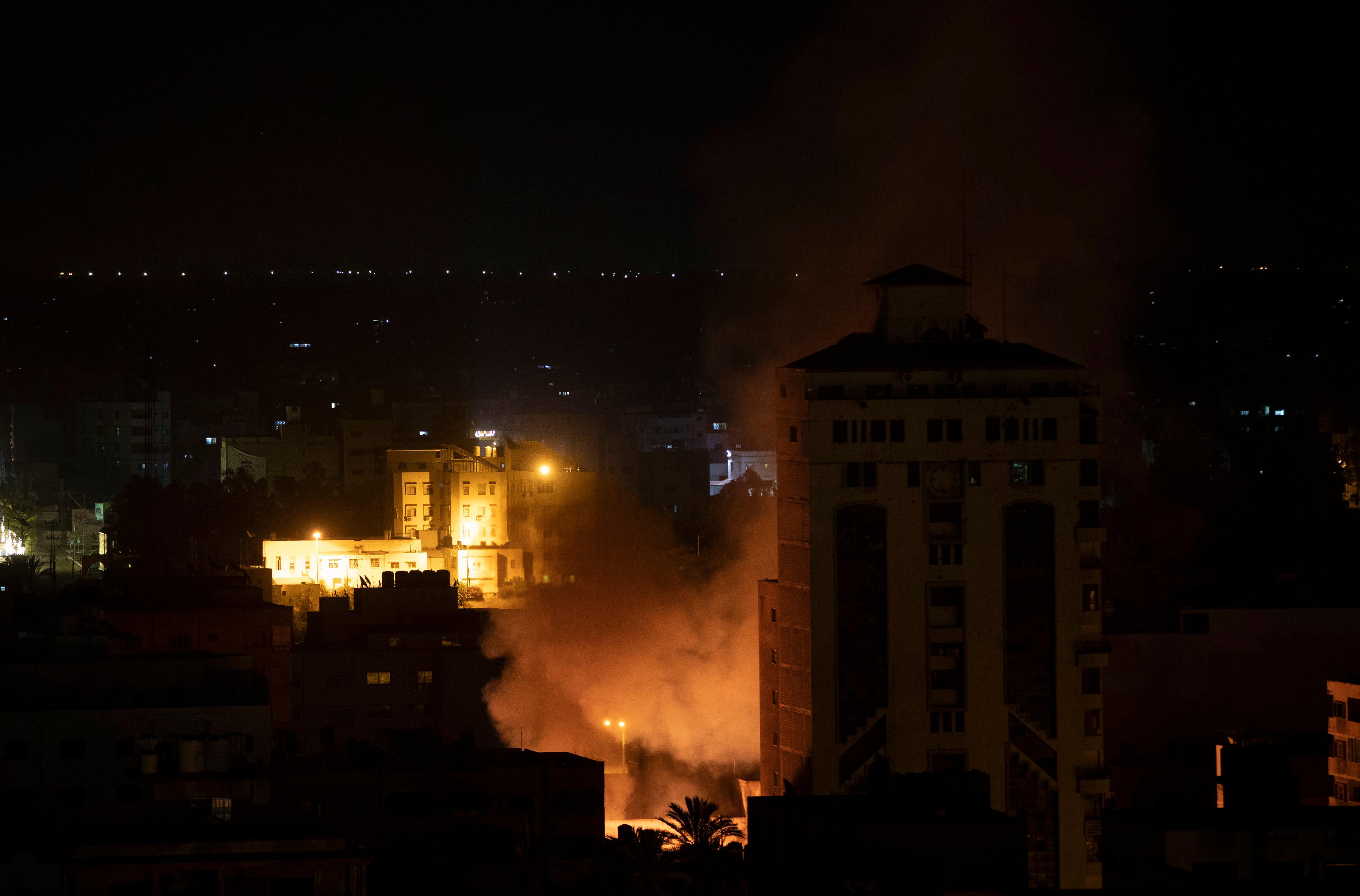Israel-Palestine map: Gaza’s conflict hotspots and a history of violence at the border
Ground invasion now feared as week of fighting threatens to escalate further
Your support helps us to tell the story
From reproductive rights to climate change to Big Tech, The Independent is on the ground when the story is developing. Whether it's investigating the financials of Elon Musk's pro-Trump PAC or producing our latest documentary, 'The A Word', which shines a light on the American women fighting for reproductive rights, we know how important it is to parse out the facts from the messaging.
At such a critical moment in US history, we need reporters on the ground. Your donation allows us to keep sending journalists to speak to both sides of the story.
The Independent is trusted by Americans across the entire political spectrum. And unlike many other quality news outlets, we choose not to lock Americans out of our reporting and analysis with paywalls. We believe quality journalism should be available to everyone, paid for by those who can afford it.
Your support makes all the difference.Violence has again erupted in the Middle East between the Israeli army and Hamas, the death toll in the disputed territory of Gaza rising in the early hours of Friday morning after a fresh assault from the Israeli army saw ground troops join the operation.
A total of 55 rockets were fired on Thursday in a coordinated effort that saw 160 planes from 12 different squadrons, as well as three brigade forces of infantry soldiers, operate together, Israeli army spokesperson Lt Col Jonathan Conricus said.
He said the assault was aimed at destroying an “underground tunnel system” known as the “metro” in Gaza and that Hamas’s rocket production capacity has been “significantly downgraded” as a result of the action.
At least 119 Palestinians have been killed in the fighting this week, with 31 children among the dead, Gaza’s health ministry said on Friday. At least 830 others have also been injured in the attacks.
Lt Col Conricus said the casualty rate in Israel had meanwhile risen to eight after an elderly woman died overnight while running for shelter.
It is feared the Israeli army is drawing up proposals for a ground invasion and is merely awaiting the sign-off from political leaders in Jerusalem before going ahead, assuring further casualties.
This map shows the key conflict zones in the region so far:

This chart meanwhile records the extent of the casualties we have seen in the region over the last decade of sporadic explosions in the ongoing tensions:

The latest conflict in a feud that raged even before the founding of the State of Israel on 14 May 1948 began on Thursday 6 May when Palestinian Muslims celebrating the start of Ramadan protested police restrictions at the historic Damascus Gate to the Old City of Jerusalem.
Worshippers attending Friday prayers the next morning at the city’s al-Aqsa mosque were met with a heavy police presence and violence erupted in which more than 200 Palestinians and 17 Israeli officers were hurt as rubber bullets and grenades were fired and arrests made.
Palestinians were also angered by the threatened eviction by force of dozens of their number from the Sheikh Jarrah neighbourhood of East Jerusalem, an area claimed by both sides.
Israel’s Supreme Court had been due to host a hearing on the issue on Monday but elected to postpone it at the request of the state attorney general in light of the fighting and said it would set a new date to hear the appeal of residents within the next 30 days.

The UN has since expressed its fear that the violence could develop into “all out war” and world leaders including US president Joe Biden have called for calm, the latter conceding that: “Israel has a right to defend itself.”
This week’s violence is the worst outbreak of fighting in Israel since 2014 but fighting has often been seen on Nakba Day - May 15 - commemorated every year by the Palestinians to remember the nakba (catastrophe) of the 700,000-strong exodus necessitated by the outbreak of the bloody Arab-Israeli War in 1948, which sees them stage rallies, give speeches and brandish the keys to the homes they were forced to leave behind and still hope to return to.
Egypt held Gaza between 1950 until the Six-Day War of 1967, when Israeli forces made military advances into the Gaza Strip plus the West Bank, Golan Heights and Egyptian Sinai, sparking fresh bloodshed and prompting the UN Security Council to pass Resolution 242 ordering Israel to withdraw from territories it considered occupied, a demand that was ignored.
Periodic explosions of violence between the two sides continued throughout the 1970s and 1980s either side of the signing of the Camp David Accords by Israeli prime minister Menachem Begin met Egyptian president Anwar Sadat, witnessed by US president Jimmy Carter on 17 September 1978.

The Palestinian Liberation Organisation (PLO)’s recognition of Israel’s right to statehood under UN Resolutions 242 and 338 in 1990 marked a significant milestone on the road to peace before Israeli PM Yitzhak Rabin and PLO chairman Yasser Arafat signed the two Oslo Accords in 1993 and 1995.
The first provided for the creation of a Palestinian interim self-government, the Palestinian National Authority, and the withdrawal of the IDF from zones still widely considered occupied. The second granted Palestinian autonomy in certain parts of the West Bank and Gaza.
An uneasy truce held until a Palestinian intifada led Israel to reoccupy West Bank cities in 2002, a destabilising event that would be worsened by the death of Arafat in 2004, a great blow to his people’s cause.
Since that time, Israel has declared war on Hezbollah in Lebanon in 2006 and launch repeated assaults on Hamas in Gaza, including Operation Cast Lead (2008), Operation Pillar of Defence (2012) and Operation Protective Edge (2014).
Further violence blew up on Nakba Day in both 2017 and 2018, the latter severe enough to merit a UN war crimes investigation.




Join our commenting forum
Join thought-provoking conversations, follow other Independent readers and see their replies
Comments